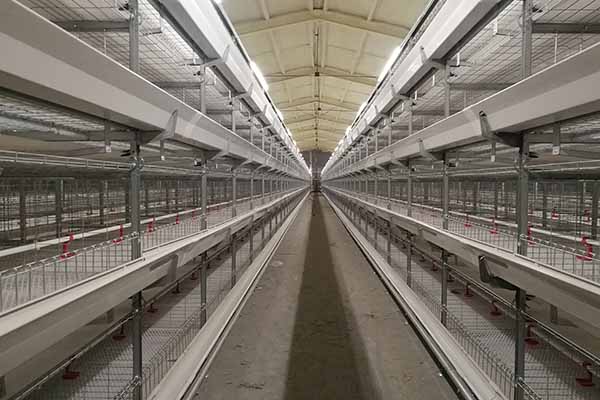Optimizing Broiler Production with Eco-Cage Systems in Factory Settings
Time : 2025-06-28
Broiler farming, being one of the most lucrative sectors of the poultry industry, has been revolutionized by advancements in housing systems. Among these advancements, the Eco-Cage system stands out for its environmental benefits, health improvements for birds, and increased production efficiency in factory settings. This article explores the Broiler Eco-Cage system and its implementation in factory farms, aiming to provide valuable insights for industry professionals seeking to enhance their production processes.
Introduction to Eco-Cage Systems
Eco-Cage systems are designed to provide an optimal living environment for broiler chickens, minimizing stress and maximizing health. Unlike traditional pens, these systems are typically enclosed, with each bird having access to an individual or semi-individual space. The design and materials used in the construction of Eco-Cages contribute to better air quality, controlled temperature, and reduced pathogen exposure.
Benefits of Eco-Cage Systems in Factory Farms
1. Enhanced Biosecurity
Factory farms require strict biosecurity measures to prevent the spread of diseases. The enclosed nature of Eco-Cage systems minimizes the risk of pathogens entering or leaving the flock, ensuring a healthier environment for the broilers and reducing the likelihood of costly disease outbreaks.
2. Improved Comfort and Welfare
Broilers reared in Eco-Cages enjoy better living conditions, with controlled temperatures, reduced dust levels, and less stress from aggression or fighting. These factors contribute to improved overall health and growth rates, making Eco-Cages an excellent choice for sustainable broiler production.
3. Increased Productivity
The use of Eco-Cage systems in factory farms has been associated with higher productivity. Birds in these systems have a lower mortality rate and shorter growth cycles, resulting in faster turnover and higher profit margins for farmers.
4. Environmental Sustainability
Eco-Cage systems promote environmental sustainability by reducing waste, conserving water, and minimizing energy consumption. The closed-loop design of these systems helps to minimize the release of greenhouse gases and reduce the carbon footprint of broiler production.
Design and Implementation of Eco-Cage Systems in Factory Settings
The design and implementation of Eco-Cage systems in factory farms require careful consideration of several factors:
1. Space Allocation
Proper space allocation is essential to ensure that birds have adequate room to move around, reducing the risk of injury and stress. Industry experts recommend a minimum of 1.2 square feet of space per bird in the Eco-Cage.
2. Ventilation and Environmental Control
Eco-Cages are designed with efficient ventilation systems to maintain optimal air quality. The use of air filters, fans, and automated controls allows for the regulation of temperature, humidity, and CO2 levels, creating a comfortable environment for the birds.
3. Water and Feeding Systems
Efficient water and feeding systems are crucial for the success of Eco-Cage systems. Automated feeders and waterers ensure that birds have access to adequate nutrients and hydration throughout the production cycle.
4. Monitoring and Management
Continuous monitoring of the Eco-Cage systems is essential for maintaining optimal conditions. The use of advanced sensors and data analytics allows for real-time monitoring of key parameters, such as temperature, humidity, and ammonia levels, enabling timely adjustments to improve bird welfare and production.
Conclusion
The implementation of Eco-Cage systems in factory farms has demonstrated significant benefits in terms of biosecurity, welfare, productivity, and environmental sustainability. As the poultry industry continues to evolve, embracing innovative housing systems like the Eco-Cage is essential for achieving long-term success and sustainability. By understanding the key aspects of Eco-Cage system design and management, factory farms can enhance their production processes and contribute to the global effort in sustainable agriculture.












